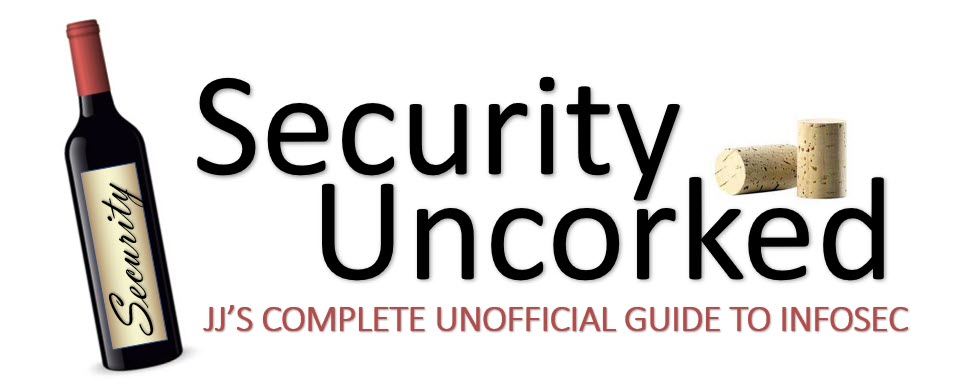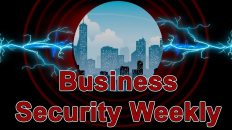Everyone asks, “what are some ways people can try mindfulness?” The answer is that there are volumes of books on just this topic, but if you’re new to cultivating and applying mindfulness, and you’ve never had formal meditation instruction, then here are three uber-easy ways to get

started right now. I’m presenting these in the context of our lives in tech and information security but (obviously) they can be used by all.
Learning to apply mindfulness is about building a toolset, trying out different tools, and evaluating their impact and your own personal results. Not every tool works equally for each person. These 3 are basic building blocks and tools that can be applied by anyone.
1. Notice: Just take a breath
Why: I know, it sounds way too simple to be useful but try it out. One thing you may have noticed working in infosec is how physically tense and mentally scattered we can get. We’re hunched over a keyboard, and always pulled a million different directions (at least 5 anyway). This is a great first step to letting some of that stress fall away and centering yourself before, during, or after a stressful moment, or to optimize mental faculty when shifting gears.
Your central nervous system is regulated in a large part by your breath. When you get tense, your breathing is shallow and it compromises the rest of your biological functions because of the chain reaction of lowered oxygen levels caused by restricted breathing. Also, when you exhale, your heart rate decreases, when you inhale it increases – this is why the cadence-based exercises (which we’ll talk about later) are great for getting control of yourself when something is making you anxious or excited (like before giving a presentation or doing in interview).
How: The first step in engaging mindfulness is to give the mind a break, and the best 101-level mindful practice (and one that is used up through expert level) is to notice your breath. To get the biggest ROI, stop moving, sit somewhere, and aside from this blog post, ditch the technology for a minute. Yes, the irony isn’t lost on me. If you’re comfortable, you can close your eyes to get a better sensory and attention experience, or leave them just partially open, not focused on anything.
Take 5-10 breaths, and just notice the feeling of the breath. Don’t try to change your breathing, you don’t need to force or time the inhalation or exhalation, just notice. However you’re breathing is perfectly fine. Notice the feeling of the air going in and out of your nostrils; notice your stomach or chest moving. Just notice and keep going for 5-10 breaths. Practices that build on this include a longer duration up to 5 minutes (you can set a timer so you’re not watching the clock), body scans to find tightness in the body, and cadence-based breathing exercises (pranayama) in which you would control the length or ratio of inhalation to exhalation.
The attentive breath is used by newbies and experienced meditators alike.
When: Use this attentive breath when you:
- Feel stressed or overwhelmed
- Have read something (email, blog, tweet) that angers you, before you respond
- First thing in the morning, before you eat lunch, and at bedtime
- Are about to go off on your offspring, spouse, or co-worker
2. Watch: Focused observation
Why: Focused observation helps with attention deficit and our habits around multi-tasking (because multi-tasking isn’t real). The human brain (this includes yours) is designed to only hold a small number of tasks/inputs for processing at any given time – this happens in the pre-frontal cortex (PFC). You’re never “multi-tasking”; your brain is simply switching between different tasks very quickly, and the speed at which one can do that is a trainable trait. But, we’re already good at that, so today we’re going to try and do the opposite – single-tasking. Focusing on one thing. I know, this is totally foreign for you.
In IT and security roles, we’re always consuming and acting – we’re reading email, a blog post, Facebook or Twitter; we’re snapping back with our witty quips, approvals, and to-dos to the team; we feel we’re always behind because of the never-ending supply of inbox items. We’re habitual about our interactions with technology. Focused observation is a way to break some of the bad habits, and replace them with some new, healthier ones. If you’re like me, you’ll catch yourself reaching for the phone along the way to share something that pops up while you do this.
How: Observing with focus is about letting something you’re looking at fully consume your attention. I’m giving you an easy “cheat” first then the real homework.
Easy IT cheat version: If you’re sitting at your desk, you can practice this full observation and attention by consuming something with your entire mind, your full focus. Find something you want to read, or an image to look at. If you’re reading a blog post, don’t click back and forth to email, don’t skim, don’t watch TV or listen to music, and don’t think about how you would respond to what you’re reading. Just read it (or look at it, if it’s an image) and take it all in, piece by piece, until the end. Then see if you can consolidate and articulate in your mind the contents of what you just took in. If it’s a blog post- can you remember the main points, the author’s point of view, the resources shared? If it’s an image, can you recall key elements or shapes?
Basic quiet observation: When you can step away from your desk and be somewhere out in the wild, try this next level of a quiet focused observation. I like to do this just sitting outside, but it works in public areas, malls, or really anywhere you can sit and not be disturbed (no kids tugging at your sleeves, no neighbors or co-workers chatting you up). Find your spot, turn off your phone (which you’ll translate to ‘silence it’, and that’s fine), and just notice what’s around you. Just like the cheat version above, let what you’re taking in consume your entire attention. You might focus on a single blade of grass, or a bug or bird. You might focus on kids in the distance playing a game, or people hustling around a mall. Run through each of your senses and take notice of what stands out – do you feel warmth of the sun (or cool shade)? Do you smell anything? What do you hear? You shouldn’t do this while you’re eating (because that’s non-existent multi-tasking) but at least one of you will be doing this with a beverage, and if so, what do you taste?
Practices that build on this include single-pointed (concentration) meditation and mindful listening (an amazing skill that can be applied at home and at work).
When: Use a focused observation when you:
- Feel scatter-brained and can’t concentrate or focus on one task
- Are switching between two tasks, use as a mental pause to switch gears
- Don’t feel grounded or can’t figure out what to do next
3. Walk: Mindful walking
Why: I struggled with what the third entry practice should be and I settled on mindful walking because everyone on the planet (except me) has a FitBit or some type of activity tracker and y’all always want to “get your steps in”. Our infosec community is especially in to the quantified self movement. So here you are brothers and sisters – mindful walking! It’s common knowledge and practice when things are getting heated, we go take a walk, we clear our head, or we get the blood going to activate the mind. Mindful walking shares some components of the first to practices – noticing the breathe and focused observation, but gives you an opportunity to be a more active participant.
How: I’m not going to lie to you- this is hard to do because you need enough space to do it comfortably, and even though it’s not required, you’ll probably spend a lot of time and energy trying to find a place to do this where a) people won’t talk to you, but also b) people won’t think you’re a serial killer lurking.
You’re going to be walking (duh) and you need to do it in a place you can safely focus attention elsewhere – meaning a city sidewalk with people and cars is not the place; we’re not playing Frogger here. You may try walking around the outside of a building, inside a mall, in a park, around the outside of your house, or even down a hall at work. In mindful walking, you’re walking at a relatively slow and purposeful pace, you can gaze softly in front of you (so you don’t smash in to anything) or you can look up and take in the surroundings. Hell, the halls at any IT conference in Vegas or Moscone will give you PLENTY of opportunity to practice this one. You can’t do it at Defcon because you’ll run in to someone not following “crowd control” or you’ll get nabbed by a Goon.
Just as with the focused observation, you’re not talking, listening, consuming, watching, or doing *anything* else except walking. And just like the breath exercise, your job while walking is simply to engage the senses and notice. Notice the pressure of your heel, then ball of foot, then toes against your shoes; notice how hard or soft the ground is; notice the air around you. Breath fully and naturally as you’re walking and noticing.
Walk like this for 5-30 minutes, and yes, even 5 minutes can give you a benefit. If you notice your mind wandering while you walk (and it will), just notice what pops up — don’t be upset that it wandered, be content with yourself that you noticed it wandered — and just come back to focusing and noticing your walking.
When: Use mindful walking when you:
- Have the opportunity, this tool is not one you can carry in your pocket, so seize the opportunity as it comes
- Want to clear your mind before or after something (good or bad)
- Have writer’s block or can’t work through a mental impasse
If you try these out (or if you’ve tried similar things) I’d love to hear about your experience!
###
Cover image <a href=’https://www.freepik.com/photos/mudra’> by wayhomestudio – www.freepik.com</a>





Excellent article! I’m going to put mindful walking into my Outlook calendar and put a sticky note on my monitor to do focused observation while working.
I followed a link to your blog from the Security Weekly podcast and I’m adding you to my RSS.
Thanks!